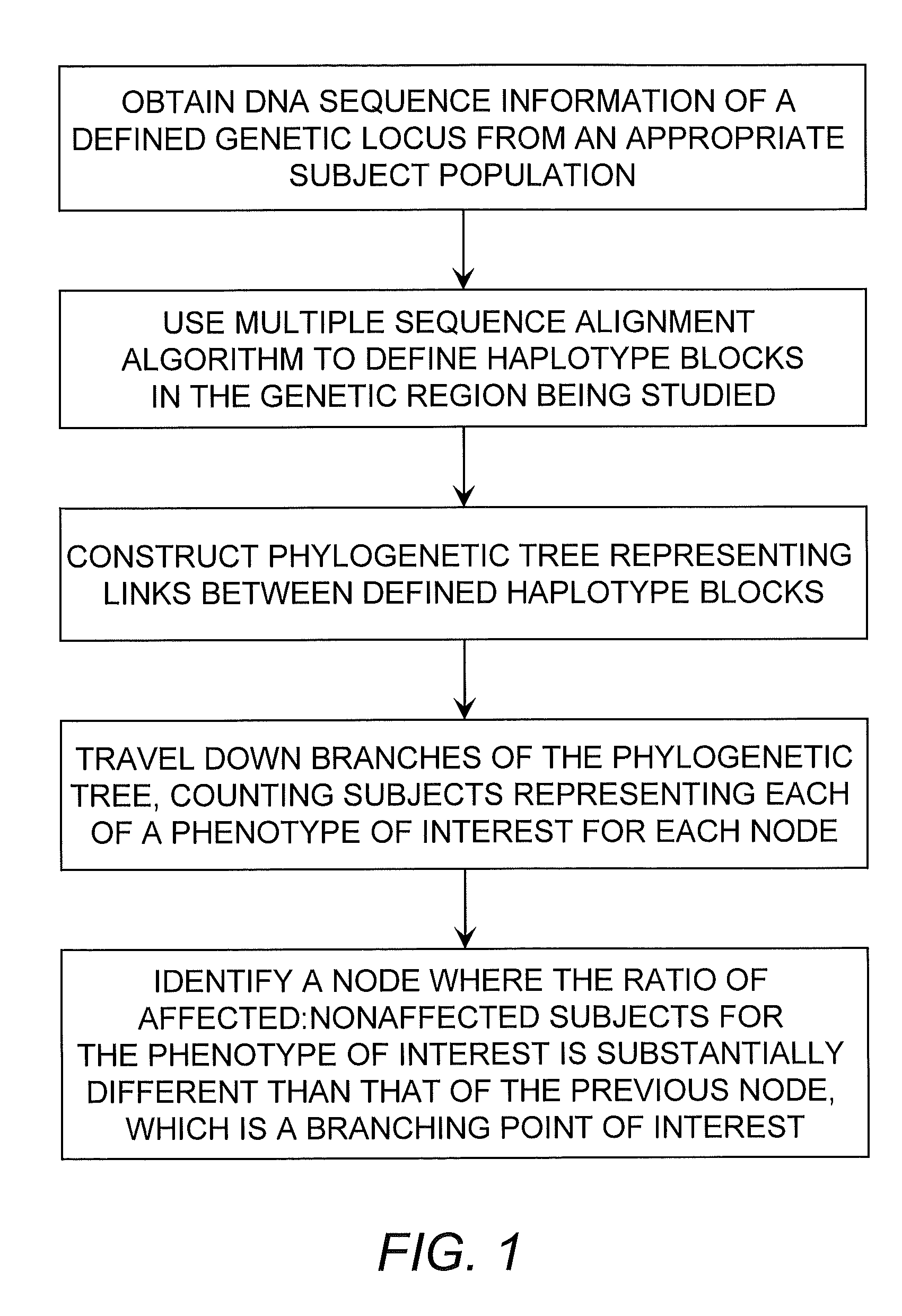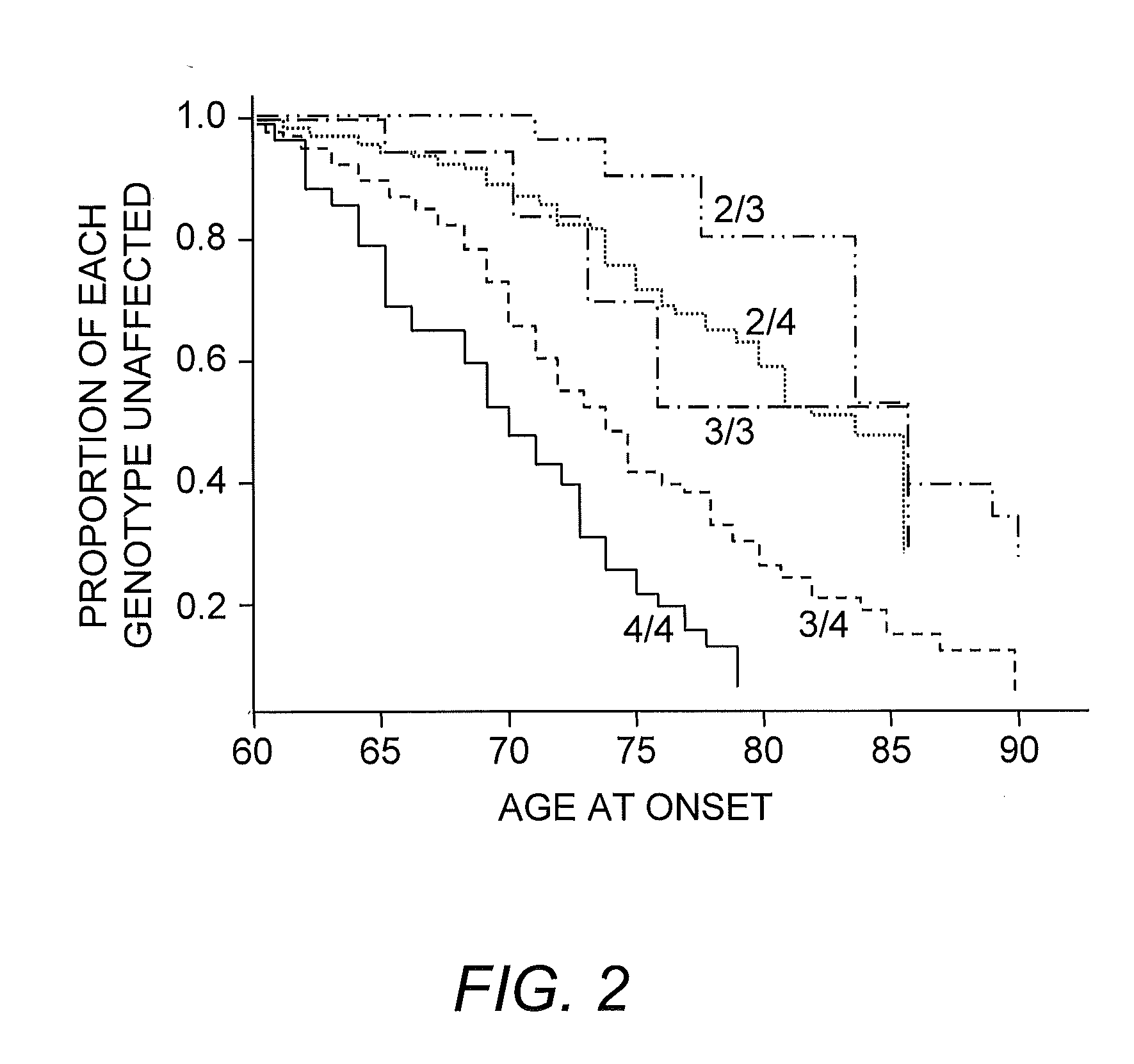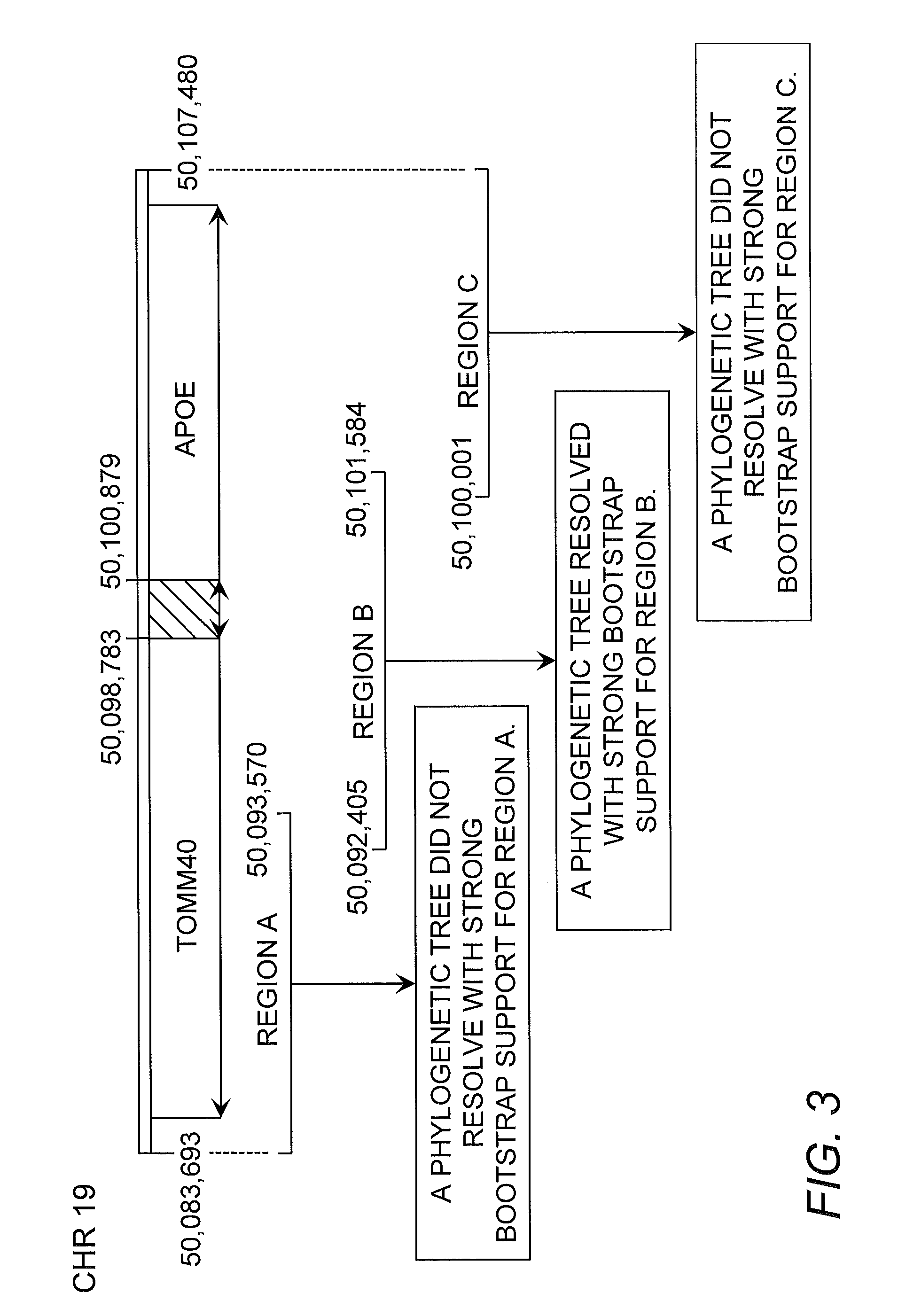Disease risk factors and methods of use
a disease risk factor and disease technology, applied in the field of genetics, pharmacogenetics, bioinformatics, etc., can solve the problem of about 50%, and achieve the effect of increasing or reducing risk
- Summary
- Abstract
- Description
- Claims
- Application Information
AI Technical Summary
Benefits of technology
Problems solved by technology
Method used
Image
Examples
example 1
Construction of Phylogenetic Trees
[0200]All of the known genome-wide scanning studies demonstrate extremely significant p values around the apolipoproteinC1 [ApoC1] locus. (Mahley et al., Proc. Natl. Acad. Sci. USA 103: 5644-51 (2006), Coon et al., J. Clin. Psychiatry 68: 613-8 (2007); Li et al., Arch. Neurol. 65: 45-53 (2007)). Of equal importance is that each series identified a “favored” borderline significant candidate gene outside of the ApoE linkage disequilibrium area, but these favored candidate genes were different in each study. TOMM40 is near ApoC1 and in linkage disequilibrium with ApoE. Interactions between ApoE 3 or ApoE 4 and different TOMM40 isoforms are believed to be associated with increased or decreased risk of developing Alzheimer's disease within an earlier age range. Age of Alzheimer's disease onset curves for Apo 4 / 4, 3 / 4, 3 / 3, 2 / 4, and 2 / 3 genotypes is shown in FIG. 2, indicating a range of risk for earlier development of the disease, depending upon the ApoE...
example 2
Identification of TOMM40 Variants of Interest
[0208]210 sequences (from 105 subjects in the AS cohort) were aligned using the CLUSTAL X program (version 2.0.10, Larkin et al., Clustal W and Clustal X version 2.0. Bioinformatics, 23:2947-2948 (2007)). The multiple sequence alignment was used to construct a phylogenetic tree using a neighbor joining algorithm (Saitou and Nei, The neighbor joining method: a new method for reconstructing phylogenetic trees. Mol. Evol. Biol., 4:406-425 (1987)) as implemented on the European Bioinformatics Institute (EBI) website.
[0209]The resulting phylogenetic tree has a structure of two major clades (A, B) at the first divergence. The ApoE genotype frequencies for these clades are tabulated and shown in FIG. 5. It is clear that group B contains subject-haplotypes of primarily ε3 / ε3 and ε3 / ε4 ApoE genotypes and almost no ε4 / ε4. Clade A contains almost all of the subject haplotypes with the ε4 / ε4 genotype.
[0210]The list of polymorphisms generated by the S...
example 3
Two Distinct Forms of ApoE 3: Those Linked to TOMM40 Haplotypes that Increase Risk and Decrease Age of Onset, and Those that Decrease Risk
[0212]The association of apolipoprotein E (ApoE) genotypes, particularly ApoE ε4 (ApoE 4), with the risk and age of onset of Alzheimer's disease (AD) remains the most confirmed genetic association for any complex disease. Estimates of the heritability of ApoE 4 for late onset AD range from 58% to 79%, and the population attributable risk due to the ApoE 4 allele is between 20% and 70%. These estimates suggest that other genetic variants and / or interactions between variants incur additional disease risk and modify age of onset distributions.
[0213]Genome wide scan association results for AD have consistently reproduced the extraordinary Alzheimer's disease association of the LD region containing ApoE. TOMM40, the protein translocase of the outer mitochondrial membrane, is in high LD with ApoE, and codes for the membrane channel through which cytopla...
PUM
| Property | Measurement | Unit |
|---|---|---|
| pH | aaaaa | aaaaa |
| volume | aaaaa | aaaaa |
| elongation temperature | aaaaa | aaaaa |
Abstract
Description
Claims
Application Information
 Login to View More
Login to View More - R&D
- Intellectual Property
- Life Sciences
- Materials
- Tech Scout
- Unparalleled Data Quality
- Higher Quality Content
- 60% Fewer Hallucinations
Browse by: Latest US Patents, China's latest patents, Technical Efficacy Thesaurus, Application Domain, Technology Topic, Popular Technical Reports.
© 2025 PatSnap. All rights reserved.Legal|Privacy policy|Modern Slavery Act Transparency Statement|Sitemap|About US| Contact US: help@patsnap.com



